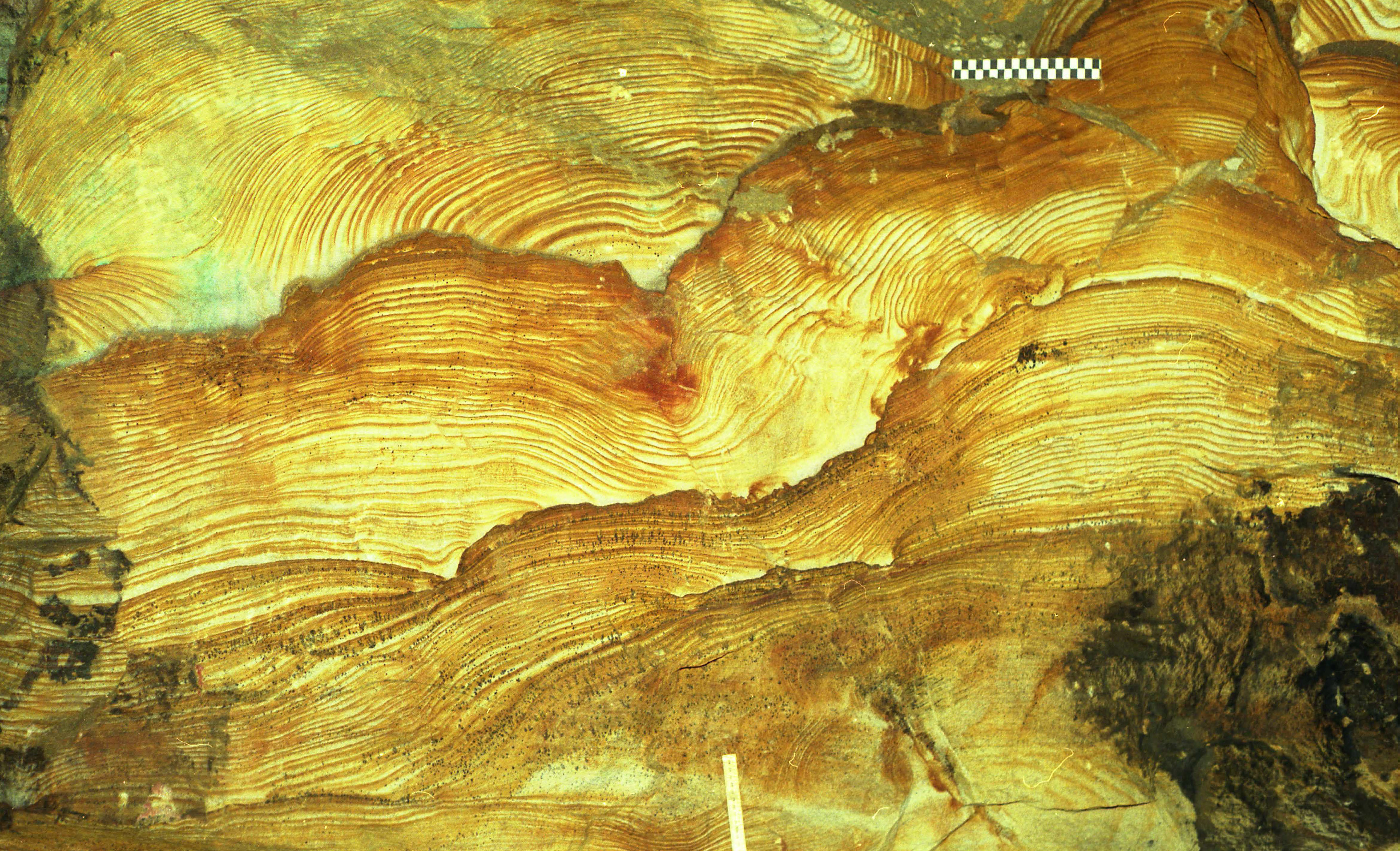Alderley Edge Mines, Cheshire
Contributed by Dr Geoff Warrington, DSc., CGeol., FGS., Honorary Visiting Fellow, Department of Geology, University of Leicester
The sediment-hosted mineralisation at the Alderley Edge Geological Site of Special Scientific Importance is the only one of its kind to be included in the Geological Conservation Review (Warrington, 2010). Extensive disused mine workings which allow access to unweathered three-dimensional sections in the red-bed host rocks are an important feature of the site. Two recent articles illustrate the value of the site for this purpose and its relevance to hydrocarbon studies.
Seers, T.D. & Hodgetts, D. 2014. Comparison of digital outcrop and conventional data collection approaches for the characterization of naturally fractured reservoir analogues. Geological Society, London, Special Publications, 374, 51-77.
This account, illustrated with 17 figures and 7 tables, is of a LIDAR (Light Detection And Ranging) study of fracture systems in members of the Mid-Triassic (early Anisian) Helsby Sandstone Formation in the Alderley Edge area, Cheshire. Particular attention is given to high-porosity sandstones of the aeolian West Mine Sandstone Member that are seen in the West Mine. The mine workings provide access to an analogue for hydrocarbon reservoirs in rocks of similar age in the East Irish Sea that is superior to what is available from surface outcrops.
Warrington, G. 2014. Inside Mid-Triassic fluvial deposits: a legacy of mining sediment-hosted ore bodies in Cheshire, UK. Proceedings of the Geologists’ Association, 125 (5-6), 548-559.
The legacy of mining at Alderley Edge includes unweathered sections which show details of the host rocks that are poorly seen in surface exposures. The account is illustrated with 19 figures, including maps, sections and photographs, with a focus on the Wood Mine in which the Wood Mine Conglomerate Member of the Mid-Triassic (early Anisian) Helsby Sandstone Formation comprises a succession of fining-upward fluvial cycles. Mines at this site provide an opportunity to view, from a unique internal perspective, situations analogous to those of hydrocarbon reservoirs in rocks of the same age in the East Irish Sea Basin.
Reference: Warrington, G. 2010. Alderley Edge district, Cheshire. Pp.182-190 in: Bevins, R.E., Young, B., Mason, J.S., Manning, D.A.C. & Symes, R.F. (eds). Mineralization of England and Wales. Geological Conservation Review Series, 36. Peterborough: Joint Nature Conservation Committee.
Note: In April 2000 the contributor directed a PESGB weekend excursion to the Alderley Edge mines.

Liesegange in Mid-Triassic aeolian sandstone, Clive Mine, north Shropshire. The complex banding reflects multiple phases of precipitation of iron minerals from migrating pore waters.

